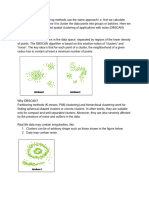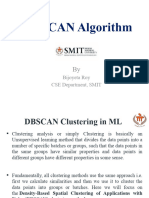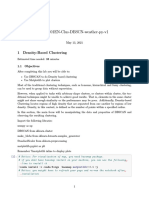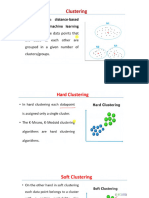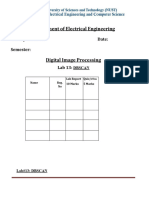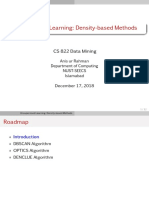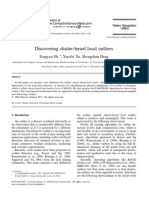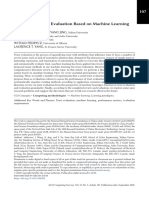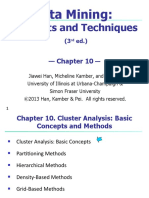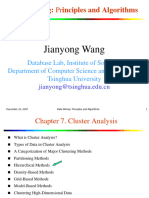0% found this document useful (0 votes)
20 views3 pagesDBSCAN - Introduction in Machine Learning.
DBSCAN is a clustering algorithm that classifies points into core, border, and noise categories based on two parameters: ε (epsilon) and MinPts. It can identify clusters of arbitrary shape and is robust to noise, but struggles with varying densities and high-dimensional data. The document also provides guidance on parameter selection, advantages, limitations, and a Python implementation example.
Uploaded by
mb18akCopyright
© © All Rights Reserved
We take content rights seriously. If you suspect this is your content, claim it here.
Available Formats
Download as PDF, TXT or read online on Scribd
0% found this document useful (0 votes)
20 views3 pagesDBSCAN - Introduction in Machine Learning.
DBSCAN is a clustering algorithm that classifies points into core, border, and noise categories based on two parameters: ε (epsilon) and MinPts. It can identify clusters of arbitrary shape and is robust to noise, but struggles with varying densities and high-dimensional data. The document also provides guidance on parameter selection, advantages, limitations, and a Python implementation example.
Uploaded by
mb18akCopyright
© © All Rights Reserved
We take content rights seriously. If you suspect this is your content, claim it here.
Available Formats
Download as PDF, TXT or read online on Scribd
/ 3








